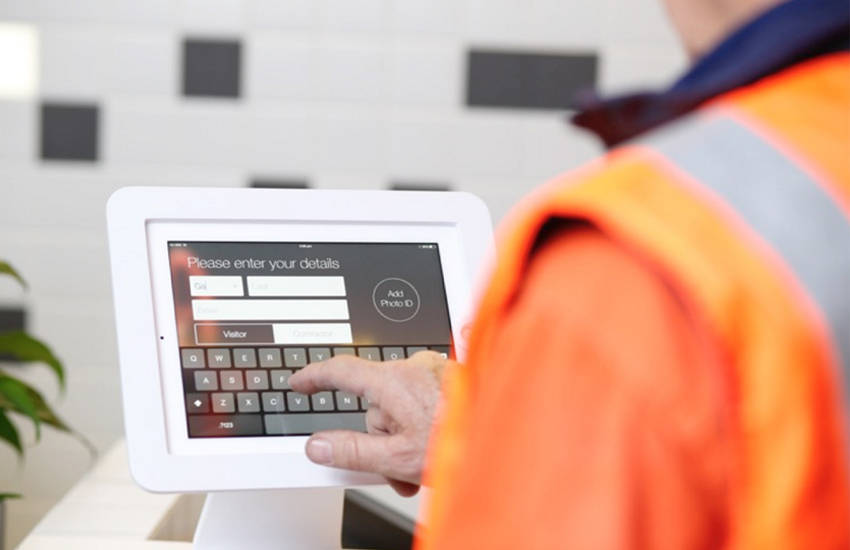A Step-by-Step Guide to Implementing Digital Visitor Management

Introduction: The Importance of Digital Visitor Management
Managing visitor access is a critical aspect of facility security and operational efficiency. Traditional manual check-in methods—such as paper logs or basic ID verification—are inefficient, error-prone, and create security risks.
A digital visitor management system (VMS) streamlines the process by offering automated check-ins, real-time tracking, and improved security protocols. Solutions like Punctualiti provide a seamless, digital approach to visitor management, enhancing security while improving the visitor experience.
This step-by-step guide outlines how to implement a digital visitor management system in your facility for maximum efficiency and security.
Step 1: Assess Your Facility’s Visitor Management Needs
The Challenge:
Every facility has unique visitor management requirements, whether it’s an office building, airport, hospital, or warehouse. A one-size-fits-all solution may not address specific security or operational concerns.
What to Do:
- Identify the types of visitors (employees, contractors, vendors, customers, guests).
- Determine security requirements (restricted access areas, ID verification, approvals).
- Analyze visitor flow patterns to optimize entry/exit points.
- Define compliance and audit requirements for visitor tracking.
Understanding your facility’s needs ensures that your digital VMS is tailored to your specific security and operational requirements.
Step 2: Choose the Right Digital Visitor Management System
The Challenge:
Not all visitor management systems provide the same level of automation, integration, or security.
What to Look For:
- Contactless Check-In – QR code, NFC, or pre-registration options.
- Integration with Access Control Systems – Ensures restricted area compliance.
- Automated Visitor Approvals – Allows pre-approved guests for faster entry.
- Real-Time Tracking & Notifications – Monitors visitor movement within the facility.
- Data Security & Compliance Features – Ensures compliance with regulations.
Punctualiti’s digital visitor management system includes these essential features, making it an ideal choice for secure and seamless visitor handling.
Step 3: Set Up Digital Registration & Pre-Approval Workflows
The Challenge:
Traditional visitor check-ins involve manual ID verification, leading to long queues and delays.
What to Do:
- Implement pre-registration where visitors provide details before arrival.
- Allow automated visitor approvals for regular guests, contractors, or vendors.
- Enable digital ID verification to streamline check-ins.
- Generate visitor QR codes for touchless entry.
Automating visitor registration reduces wait times, improves security, and enhances efficiency.
Step 4: Integrate with Security & Access Control Systems
The Challenge:
Without proper integration, digital visitor management remains a standalone system that lacks coordination with security protocols.
What to Do:
- Link your VMS with access control for restricted areas.
- Ensure real-time syncing with security teams to monitor visitor activity.
- Set up custom visitor access levels (e.g., contractors allowed in maintenance zones, guests restricted to lobby areas).
Punctualiti’s integrated visitor management system enables seamless coordination with security teams to prevent unauthorized access.
Step 5: Train Staff & Communicate Visitor Policies
The Challenge:
Employees and security personnel must understand the new system to ensure smooth implementation.
What to Do:
- Provide training for reception staff and security teams on VMS operation.
- Establish visitor guidelines and policies for different visitor types.
- Send automated notifications about the new system to employees and stakeholders.
Well-informed staff ensures a smooth transition to digital visitor management.
Step 6: Test & Optimize Your Visitor Management System
The Challenge:
Before full deployment, testing is crucial to ensure a seamless experience for visitors and staff.
What to Do:
- Conduct a pilot test with selected visitors to identify system gaps.
- Gather feedback from employees and security personnel.
- Adjust workflows based on real-time visitor flow and security needs.
Optimization ensures that the system is fully functional before facility-wide deployment.
Step 7: Monitor & Improve with Data Insights
The Challenge:
Without continuous tracking and evaluation, facilities may not fully leverage their visitor management system.
What to Do:
- Use real-time analytics to monitor visitor flow patterns.
- Identify peak hours and adjust staffing accordingly.
- Track visitor compliance records for audits and security reviews.
- Implement feedback mechanisms for ongoing improvements.
With Punctualiti’s real-time visitor tracking and analytics, facilities can continuously enhance security and operational efficiency.
Conclusion: Why Digital Visitor Management is Essential
A digital visitor management system provides enhanced security, automation, and streamlined visitor tracking. The implementation process involves:
- Assessing facility-specific visitor needs
- Choosing a VMS with automation and security features
- Setting up digital check-ins and pre-approval workflows
- Integrating with security and access control
- Training staff and defining visitor policies
- Testing and optimizing the system before deployment
- Monitoring visitor data for continuous improvement
Punctualiti’s visitor management solution helps businesses automate visitor check-ins, improve security, and enhance operational efficiency.
For facilities looking to upgrade your visitor management system, digital solutions offer the best security, efficiency, and compliance benefits, contact us here!